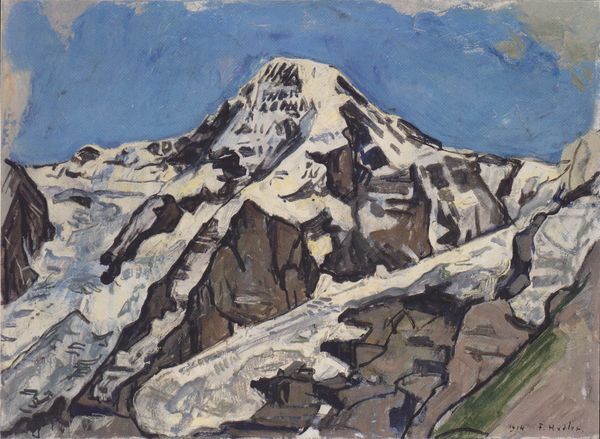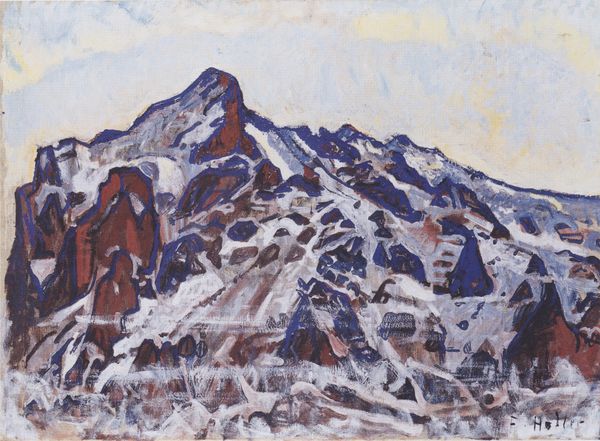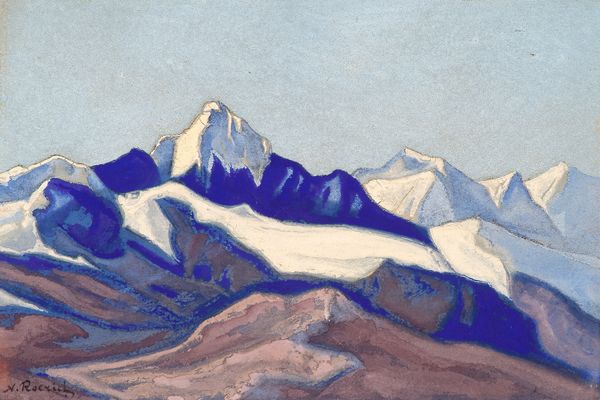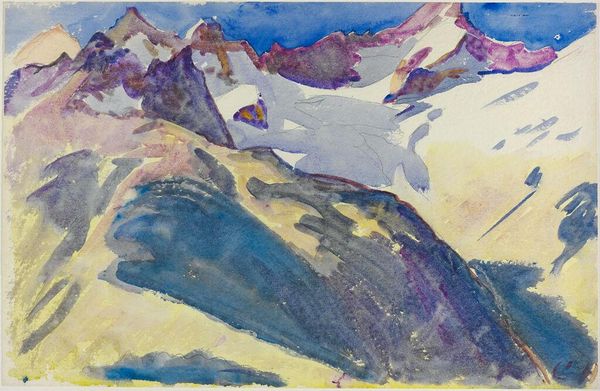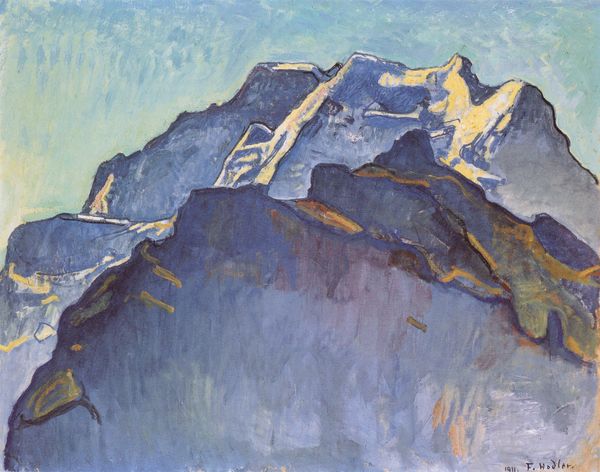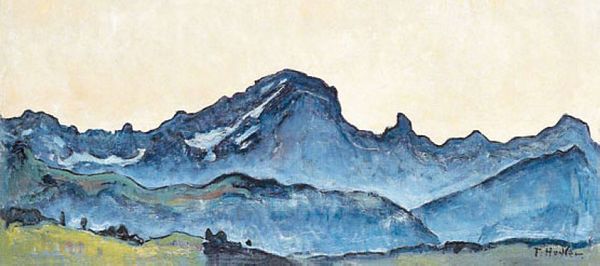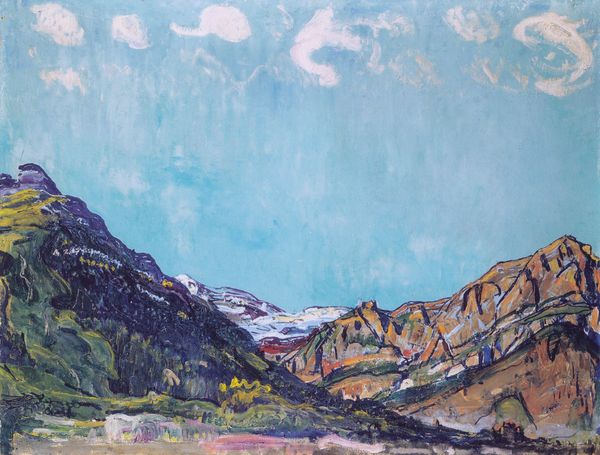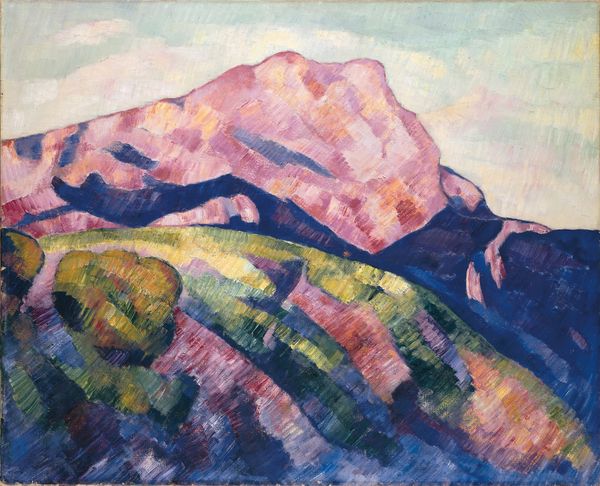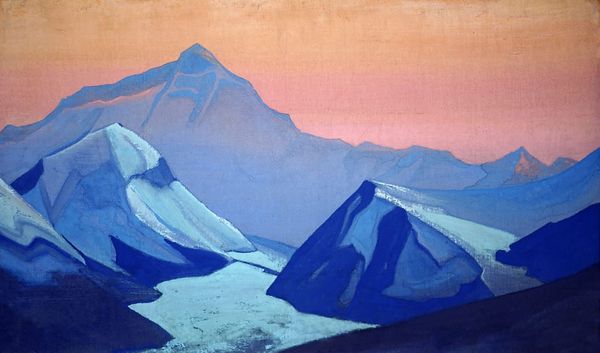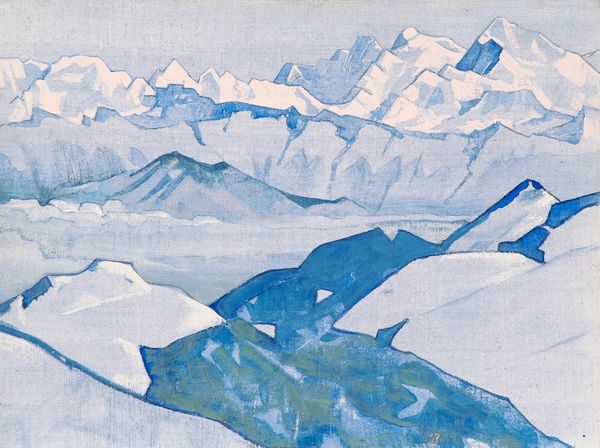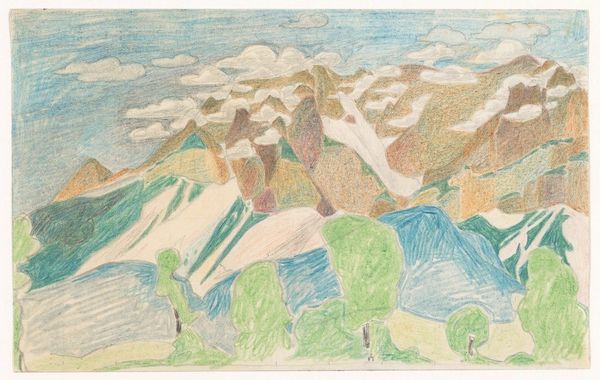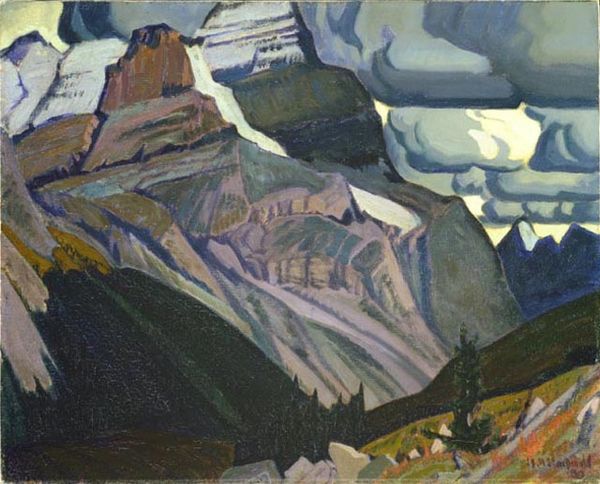
Dimensions: 64.5 x 91.5 cm
Copyright: Public domain
Editor: We're looking at Ferdinand Hodler’s "The Monk with Clouds," created around 1911. The textures in tempera and watercolor are lovely and it seems to capture the silent majesty of the mountains. What's your interpretation of this piece? Curator: This work is fascinating when placed within the context of early 20th-century anxieties surrounding industrialization and spiritual seeking. Hodler, deeply impacted by symbolism and the artistic milieu, portrays nature as a space for contemplation. Do you notice the deliberate geometric simplification and the rhythmic arrangement of the clouds, how that resonates with his concept of "parallelism?" It suggests that humanity’s internal state echoes nature's grand designs. Editor: That makes sense. I didn't see that parallelism so directly at first, but the repetitive cloud forms really emphasize it. It's not just a pretty landscape, then? Curator: Not at all. Hodler engaged deeply with the era's philosophical and political questions. Consider that landscape painting, during that period, moved past representing scenic beauty towards articulating identity, belonging, and even resistance to modernity's alienating forces. He might have seen the mountain as both a literal place but also a symbol of resilience. What could the climb towards that peak possibly symbolize for individuals and communities alike? Editor: So, the simple image actually asks questions about identity and our place in the world? Curator: Exactly. And, in his portrayal of a landscape almost untouched by humans, is he critiquing urban life, seeking a return to more "authentic" experiences rooted in nature, far from capitalist structures? It prompts one to question how landscape aesthetics are entangled with deeper social and political ideals. Editor: I'm now seeing the landscape – the colors, and repetition – so differently. Thanks for pointing out those crucial layers. Curator: Art invites us to confront our preconceived notions and explore deeper significance and by linking Hodler’s style with broader concerns around cultural transformation.
Comments
No comments
Be the first to comment and join the conversation on the ultimate creative platform.
